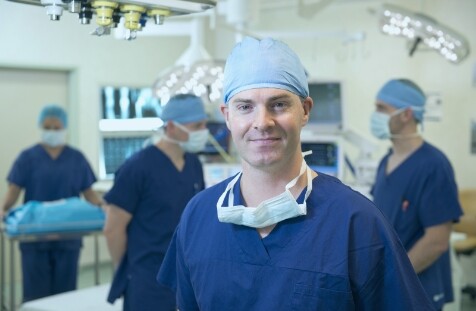Shoulder Arthroscopy - Acromioclavicular Joint Excision
Shoulder Surgery - Adelaide Orthopaedic Specialist
Acromioclavicular joint excision may reduce pain caused by damage to the AC joint. The specialists at Adelaide Shoulder & Upper Limb Clinic deliver this procedure using a minimally-invasive shoulder arthroscopy, also known as key-hole surgery.
What is an acromioclavicular joint excision?
The acromioclavicular joint (or AC joint) is the joint formed by the meeting of the acromion (part of the shoulder blade) and the clavicle (collarbone). If the cartilage which protects the joint decays, the bones can begin to rub together painfully.
The goal of acromioclavicular joint excision is to remove the part of the damaged acromioclavicular (AC) joint without destabilising it, which prevents the bones from rubbing on each other. This reduces ongoing pain, and can help restore a normal quality of life.
When is an arthroscopic acromioclavicular joint excision performed?
An acromioclavicular joint excision may be performed if you have persistent shoulder pain resulting from pressure on the AC joint that has not responded to conservative management. This may result from sudden trauma, repetitive use injuries, or degeneration due to osteoarthritis.
As subacromial impingement often occurs alongside arthritic damage to the cartilage, you may have an arthroscopic subacromial decompression done in the same operation.
What happens during shoulder arthroscopy for an acromioclavicular joint excision?
In an acromioclavicular joint excision, the end of the clavicle bone is removed. The specialists at Adelaide Shoulder & Upper Limb Clinic perform this procedure using a minimally-invasive arthroscopic approach, which results in less scarring and has been associated with a faster recovery period.
A small incision is made in the back of the shoulder, and a tiny camera (arthroscope) is inserted through the opening to inspect the site. This ensures that there are no underlying conditions which need to be managed separately.
Once the course of action is confirmed, another small incision is made in the front of the shoulder to allow access to the joint. A shaving tool is then inserted to remove any inflamed tissue, and a blunt tool is used to push aside the joint’s muscles and ligaments and expose the end of the clavicle bone.
A different shaving tool is used to remove about 6-7mm of bone from the clavicle. The surgeon then checks that the new surfaces match evenly, and the tools are removed from the access points. Following this, the wounds are stitched closed and dressings are applied.

What are the risks involved?
Alongside usual surgical risks, the risks of AC joint excision may include:
- Continued joint weakness or pain
- Ongoing shoulder joint instability
- Injury to surrounding nerves and blood vessels
- Shoulder stiffness
- Inadequate resection
Recovery from acromioclavicular joint excision
You will likely experience some level of pain immediately after the procedure. Your arm will be placed in a sling for comfort, although you will generally be encouraged to begin moving it as soon after the operation as possible. Your surgeon will prescribe medication to help you manage your pain.
You will be scheduled to visit your surgeon for a follow-up appointment around three weeks after your surgery. This appointment will involve a physical exam to assess your recovery and provide ongoing recommendations. You may be given post-operative exercises to help restore strength and movement to the joint, or referred to a physiotherapist for ongoing care.
It’s important to remember that your own recovery will be impacted by factors including your individual health and requirements, and may not reflect the above information exactly. Your specialist will explain the expected recovery schedule with you during your consultation period.
Have you tried our…
Shoulder pain self assessment tool?